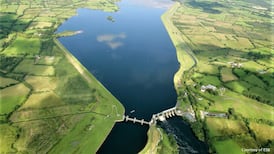A number of carvings which date back to prehistoric times have been identified for the first time on a stone circle in Co Limerick.
Ken Williams, a photographer from Drogheda, Co Louth, who specialises in taking photos of ancient stones at sites such as Newgrange, discovered the new markings at Grange stone circle at Lough Gur, Co Limerick last week.
The Office of Public Works (OPW) described the find as a “remarkable discovery” of “spectacular” concentric circles and arcs at the historic site.
Mr Williams said he had previously visited the site in early 2020 before the start of the Covid-19 pandemic. During a recent visit, he noticed parts of one of the stones previously covered with moss was now exposed.
READ MORE
Using several lights he said he was able to photograph previously unseen carvings on the stone. “It seems like this year the extreme heat has killed off a lot of the moss and revealed these carvings”, he told The Irish Times.
Mr Williams described the newly identified carvings as “really significant” and added it was rare to find new man-made markings from prehistoric times.
To the naked eye, the carvings would be very hard to spot until they were pointed out, he said.
“When it was carved originally it would have really stood out,” he said.
Dr Elizabeth Shee Twohig, a former senior archaeology lecturer in University College Cork who specialises in megalithic art and tombs, said the carvings were similar to others found in passage tombs in the north and east of the country, such as at Knowth and Newgrange.
The retired academic said there was only a single known stone carving similar to the recent find in Munster or Connacht. “It is possible that the stone is contemporary with the banked enclosure henge at circa 3,000 BC and was incorporated into the circle built inside the enclosure at a slightly later date,” she said.
Minister of State for Heritage Malcolm Noonan said the stone circle had “captivated and intrigued locals and visitors for many years”, with the latest find showing “yet again the capacity our national monuments have to surprise and engage us”.











